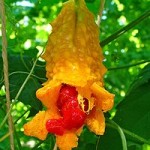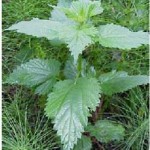 As many of you already know I am highly critical of the Internet as a source of information on foraging. This is not to say there isn’t quality information available, there is. Journals, universities, research groups, dedicated institutions and credible individuals do a good job of bringing foragers good information. It is home-grown sites where most of the nonsense gets proliferated to the point that those of us who are deeply involved in this endeavor spend a lot of time debunking myths. Personally I have given up on Wikipedia. It is so wrong on foraging so often that it is a serious threat to a forager’s health.
As many of you already know I am highly critical of the Internet as a source of information on foraging. This is not to say there isn’t quality information available, there is. Journals, universities, research groups, dedicated institutions and credible individuals do a good job of bringing foragers good information. It is home-grown sites where most of the nonsense gets proliferated to the point that those of us who are deeply involved in this endeavor spend a lot of time debunking myths. Personally I have given up on Wikipedia. It is so wrong on foraging so often that it is a serious threat to a forager’s health.
Some of the myths are understandable, some of them are just plain ignorant. But they highlight what I see as the one of the main problems of the Internet: It is not self-correcting. I am not saying books are error free because they are not. But published errors tend to get corrected and certainly are not as proliferated as much as those on the Internet. I can think of several immediately:
Myth 1: Pine needle tea causes abortions.
The basis for this rumor is a veterinary study decades ago. If you are a cow and you eat many pounds of Ponderosa Pine needles you have a 5 to 8 percent chance out of 100 of having an abortion or still-birth. If you boil a huge amount of pine needles in water for hours down to a small amount of gross liquid and you drink it, then maybe it would cause an abortion. A few needles soaked in hot water is no threat to anyone except for possible allergies. Here’s what famous forager Euell Gibbons had to say: “When I was a boy we used to eat ponderosa pine for pleasure . . . called it “slivers”. In the spring the bark is really gorged with starches and sugars and tastes quite sweet. It’s also high in vitamins.”
Myth 2: The arils around the seeds of the bitter gourd (Momordica charantia) are toxic to children.
This started with one website that provided no evidence. I have no idea where this came from because there is nothing in the literature or the history of this plant to suggest that. Professor Julia Morton, who wrote extensively about edible and toxic plants, never mentions any problems with the aril and children. Indeed, the aril is nearly all lycopene. Hard to see how that is life threatening. I knew a nursing mother who ate them with no effect on her or her child. The fruit, however, is toxic to dogs.
Myth 3: Eating old stinging nettles will give you kidney stones.
They will give you a tired jaw but not kidney stones. The older nettles have cystoliths (Greek for cavity stones) which are clumps of calcium carbonate in the membranes of the nettles. Because they are “liths’ some took that to mean they can cause kidney stones and why one should not eat old nettles. The research shows just the opposite of the rumor, that intake of calcium carbonate decreases the chance of kidney stones.
Myth 4: Tiger Lily pollen makes people sick.
This one is rife on the Internet. It is absolutely absent from published sources prior to this century. Even books on poison fail to mention this whereas books published before 2000 say the pollen is quite edible. There is no research that shows tiger Lily pollen is toxic to humans. In fact, I know a well-known international expert who eats it. I know because I asked him. However, all parts of the plant can be fatal to cats. If they lick the pollen off their fur it can cause kidney failure.
Myth 5 & 6: If a bird or an animal can eat it you can.
Among the many shortcuts I hear these have to be the most common. I have raised both chickens and squirrels and happen to know some about them. Arsenic is a disease preventative in chickens meaning birds can eat arsenic. Squirrels can eat a mushroom laced strychnine whereas a small part of it would kill us. Poison Ivy is a high protein food for deer. Enough said.
Myth 7: Only Tuberous Begonias are edible
This one did start with a published source but the moment the Internet was invented this myth became institutionalized on the Internet. In fact I wrote to the main proliferator of this myth and provided research that it was not true. Indeed, I eat wax begonia leaves often and make them into delicious tartlets (the recipe is in the article.) If they ain’t edible they’ve had more than a decade to let me know and haven’t so far.
The Least Credible Is The Most Credible?
Not too long ago I was commissioned to do some research on who believed the Internet versus actual accuracy among the various popular media. Newspapers still came out on top as the most accurate, the Internet the least. Yet, those under 40 viewed the Internet as the most credible of all media. Therein lies the rub, the least credible media is considered by part of the population as the most credible.
Personally, I would not bet my life on it.







